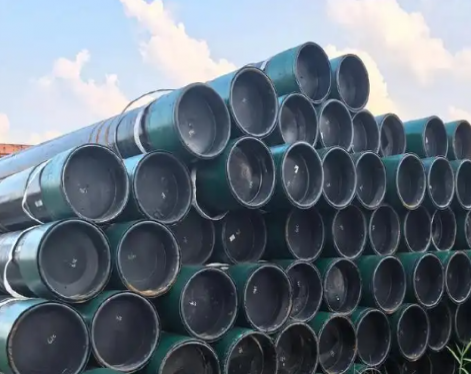The abbreviation for non-destructive testing is NDT (or NDE, non-destructive examination), which is based on the use of radiation, ultrasound, infrared, electromagnetic and other principles and technologies on the premise of not damaging or affecting the performance of the tested object, and combining instruments to materials and parts , Equipment for defect, chemical and physical parameter detection technology. Common such as ultrasonic detection of cracks in welds.
Commonly used non-destructive testing methods: eddy current testing (ECT), radiographic testing (RT), ultrasonic testing (UT), magnetic particle testing (MT) and liquid penetrating testing (PT). Other non-destructive testing methods: Acoustic Emission Testing (AE), Thermal Image/Infrared (TIR), Leak Test (LT), AC Field Measurement Technology (ACFMT), Magnetic Flux Leakage Testing (MFL), Far Field Test and Detection Method (RFT), Time difference of ultrasonic diffraction (TOFD), etc.
Non-destructive testing is to use the sound, light, magnetic and electrical properties of the material to detect whether there are defects or inhomogeneities in the inspected object without damaging or affecting the performance of the inspected object, giving the size and location of the defect , Nature and quantity. Compared with destructive testing, non-destructive testing has the following characteristics.
1. It is non-destructive, because it will not damage the performance of the detected object during testing;
2. It is comprehensive. Because the detection is non-destructive, 100% comprehensive detection of the detected object can be carried out when necessary, which is impossible for destructive detection;
3. Full-process, destructive testing is generally only applicable to the testing of raw materials, such as stretching, compression, bending, etc. commonly used in mechanical engineering. Destructive testing is carried out on raw materials used in manufacturing. Supplies, unless they are not prepared to continue to serve, otherwise destructive testing cannot be performed, and non-destructive testing does not damage the performance of the tested object. Therefore, it can not only inspect the whole process of manufacturing raw materials, intermediate process links, and the final product, but also inspect the equipment in service.
The development of non-destructive testing:
Non-destructive testing is no longer just using X-rays. Almost all physical phenomena including sound, electricity, magnetism, electromagnetic waves, neutrons, lasers, etc. are used for non-destructive testing, such as ultrasonic testing, eddy current testing, magnetic particle testing, and radiographic testing. , Penetration detection, visual inspection, infrared detection, microwave detection, leak detection, acoustic emission detection, magnetic flux leakage detection, magnetic memory detection, thermal neutron photography detection, laser speckle imaging detection, fiber grating sensing technology, etc., and New methods and technologies are still being developed and applied.
Some seemingly very traditional non-destructive testing methods have actually developed many new technologies, such as:
1. Radiographic testing-the traditional technique is: film radiography (X-ray and gamma-ray). New technologies include: accelerator high-energy X-ray photography, digital radiography (DR), computer radiography (CR, similar to digital photography), computer tomography (CT), ray diffraction and so on.
2. Ultrasonic testing-the traditional technology is: A-mode ultrasound (A-scan ultrasound, A-ultrasound). New technologies include: B scan ultrasound (B ultrasound), C scan ultrasound (C ultrasound), ultrasonic diffraction (TOFD), phased array ultrasound, resonance ultrasound, electromagnetic ultrasound, ultrasonic guided waves, and so on.
Commonly used non-destructive testing methods: eddy current testing (ECT), radiographic testing (RT), ultrasonic testing (UT), magnetic particle testing (MT) and liquid penetrating testing (PT). Other non-destructive testing methods: Acoustic Emission Testing (AE), Thermal Image/Infrared (TIR), Leak Test (LT), AC Field Measurement Technology (ACFMT), Magnetic Flux Leakage Testing (MFL), Far Field Test and Detection Method (RFT), Time difference of ultrasonic diffraction (TOFD), etc.
Non-destructive testing is to use the sound, light, magnetic and electrical properties of the material to detect whether there are defects or inhomogeneities in the inspected object without damaging or affecting the performance of the inspected object, giving the size and location of the defect , Nature and quantity. Compared with destructive testing, non-destructive testing has the following characteristics.
1. It is non-destructive, because it will not damage the performance of the detected object during testing;
2. It is comprehensive. Because the detection is non-destructive, 100% comprehensive detection of the detected object can be carried out when necessary, which is impossible for destructive detection;
3. Full-process, destructive testing is generally only applicable to the testing of raw materials, such as stretching, compression, bending, etc. commonly used in mechanical engineering. Destructive testing is carried out on raw materials used in manufacturing. Supplies, unless they are not prepared to continue to serve, otherwise destructive testing cannot be performed, and non-destructive testing does not damage the performance of the tested object. Therefore, it can not only inspect the whole process of manufacturing raw materials, intermediate process links, and the final product, but also inspect the equipment in service.
The development of non-destructive testing:
Non-destructive testing is no longer just using X-rays. Almost all physical phenomena including sound, electricity, magnetism, electromagnetic waves, neutrons, lasers, etc. are used for non-destructive testing, such as ultrasonic testing, eddy current testing, magnetic particle testing, and radiographic testing. , Penetration detection, visual inspection, infrared detection, microwave detection, leak detection, acoustic emission detection, magnetic flux leakage detection, magnetic memory detection, thermal neutron photography detection, laser speckle imaging detection, fiber grating sensing technology, etc., and New methods and technologies are still being developed and applied.
Some seemingly very traditional non-destructive testing methods have actually developed many new technologies, such as:
1. Radiographic testing-the traditional technique is: film radiography (X-ray and gamma-ray). New technologies include: accelerator high-energy X-ray photography, digital radiography (DR), computer radiography (CR, similar to digital photography), computer tomography (CT), ray diffraction and so on.
2. Ultrasonic testing-the traditional technology is: A-mode ultrasound (A-scan ultrasound, A-ultrasound). New technologies include: B scan ultrasound (B ultrasound), C scan ultrasound (C ultrasound), ultrasonic diffraction (TOFD), phased array ultrasound, resonance ultrasound, electromagnetic ultrasound, ultrasonic guided waves, and so on.









